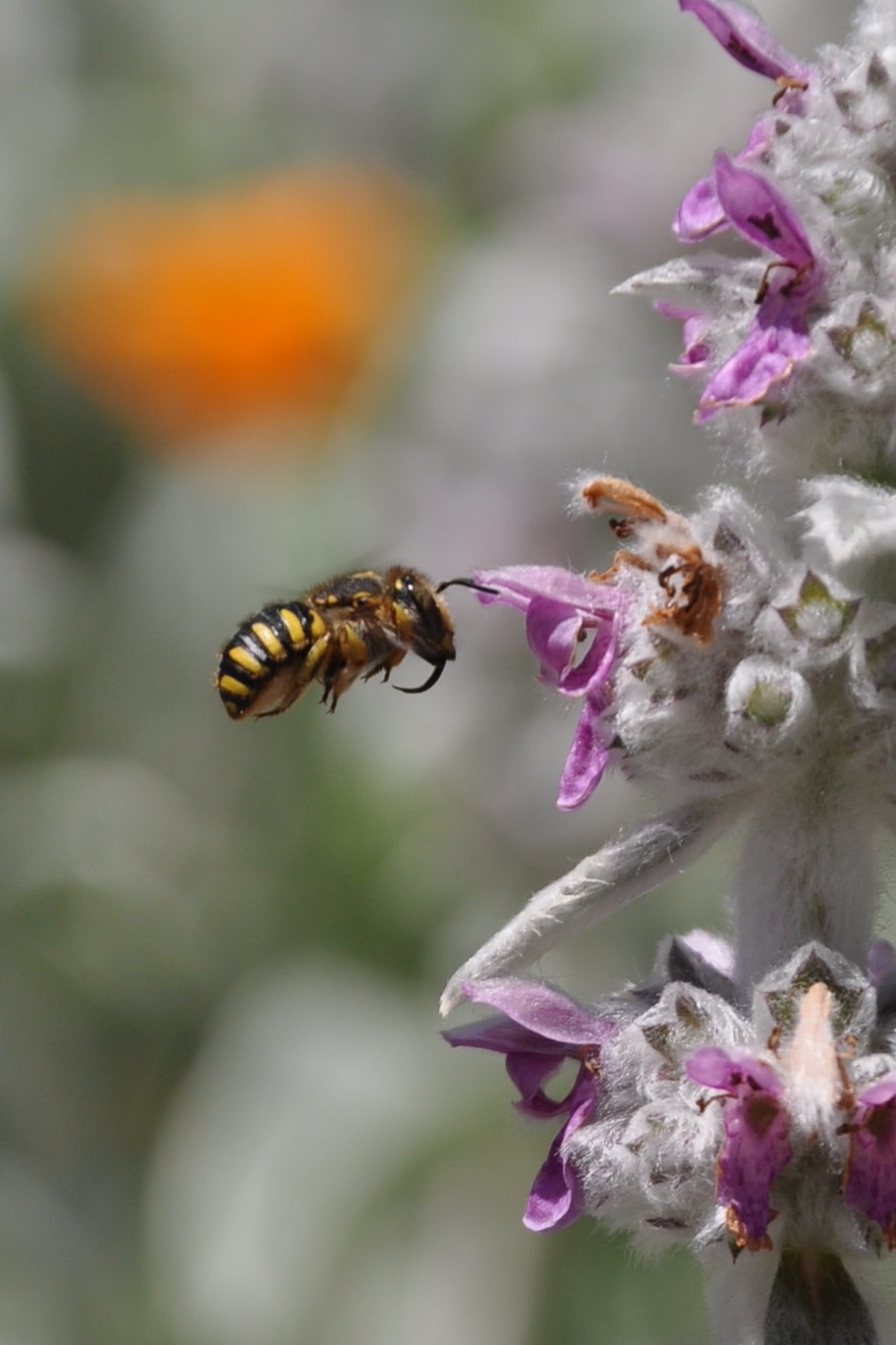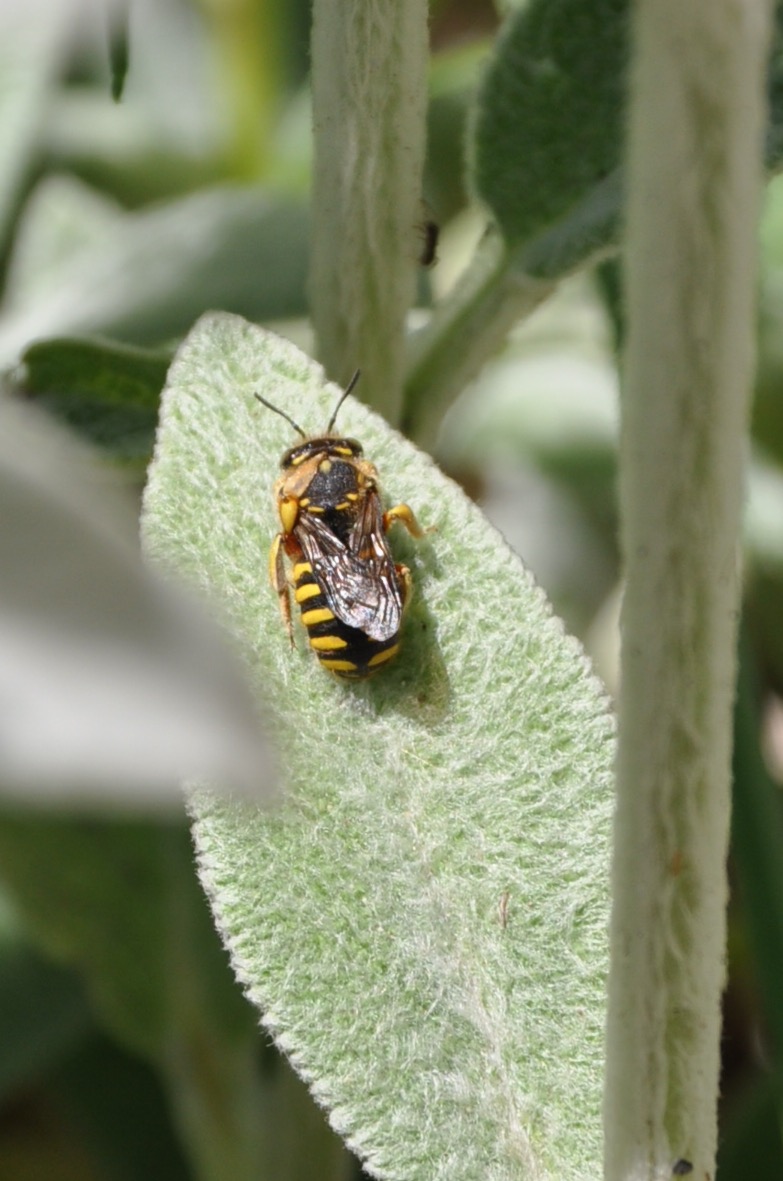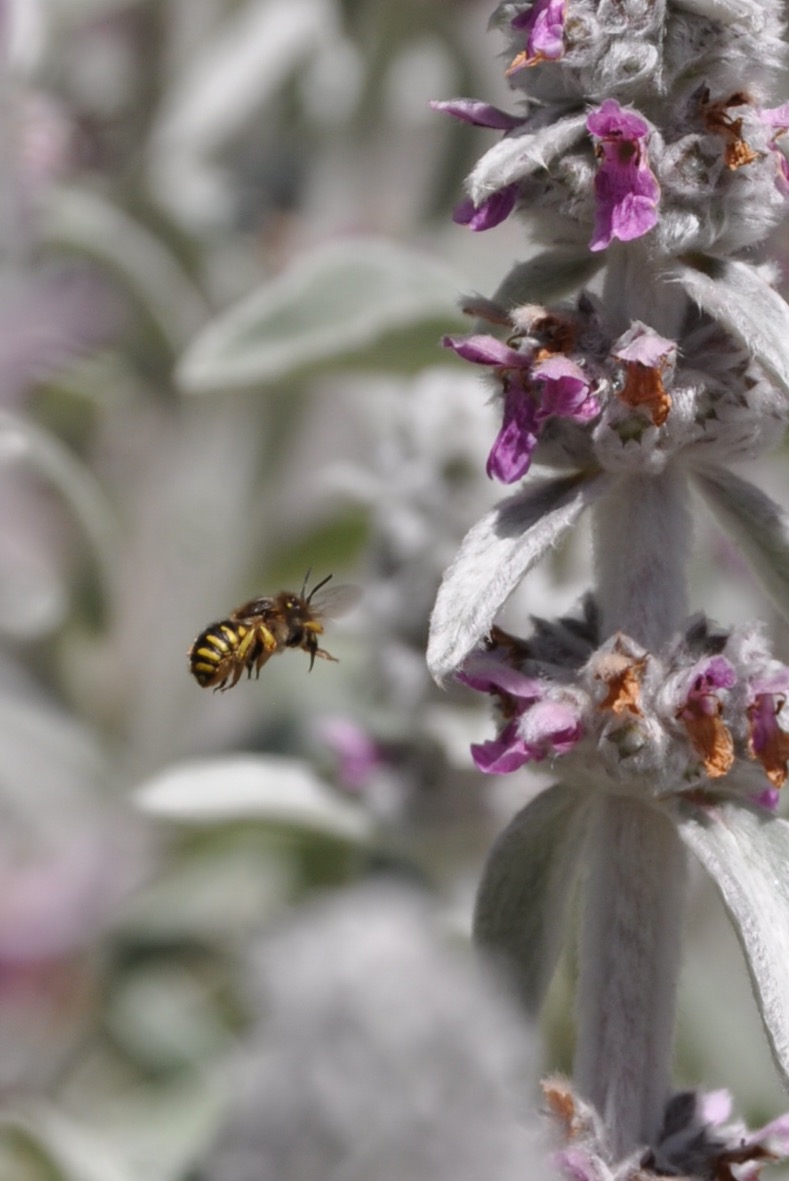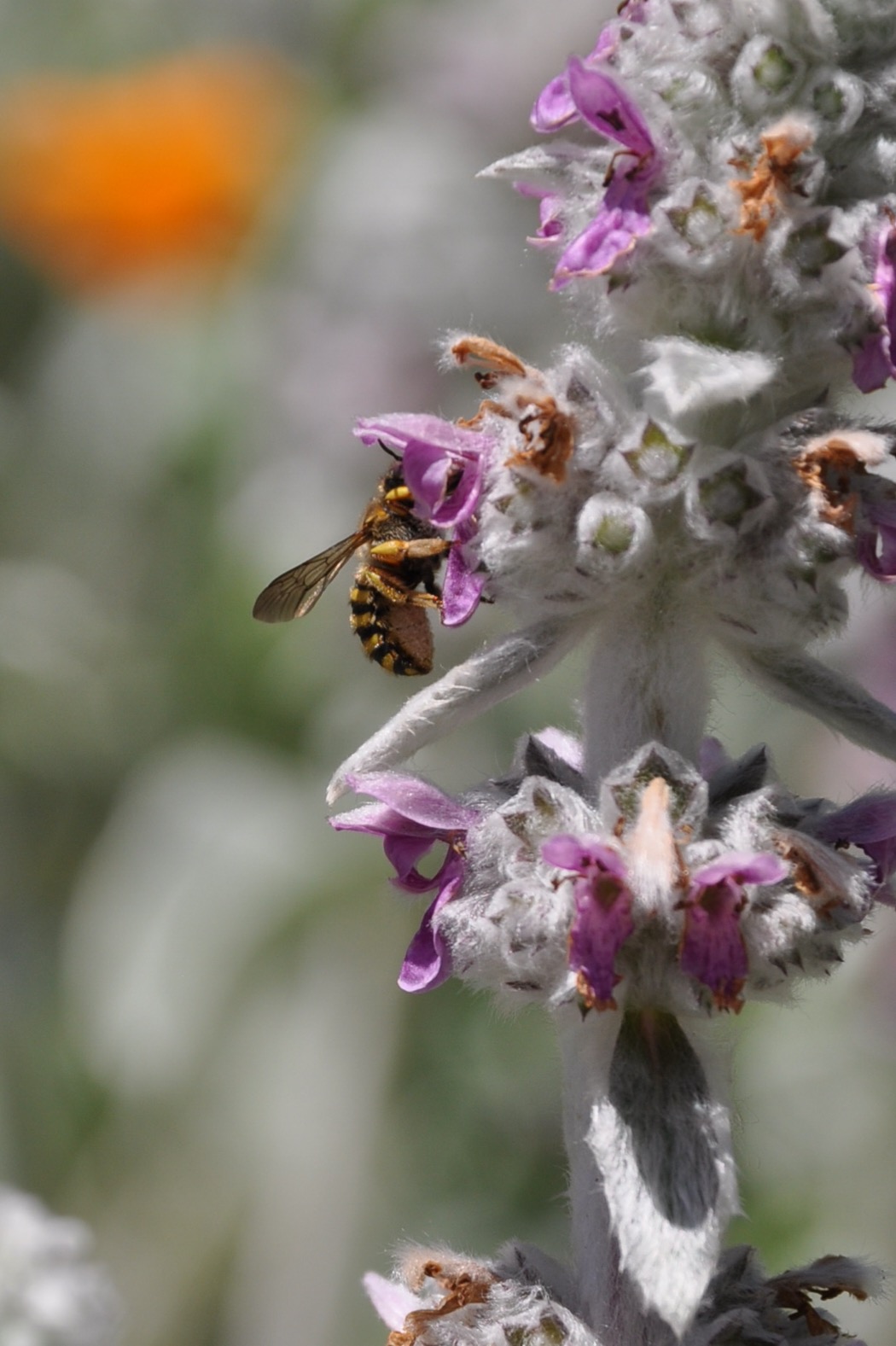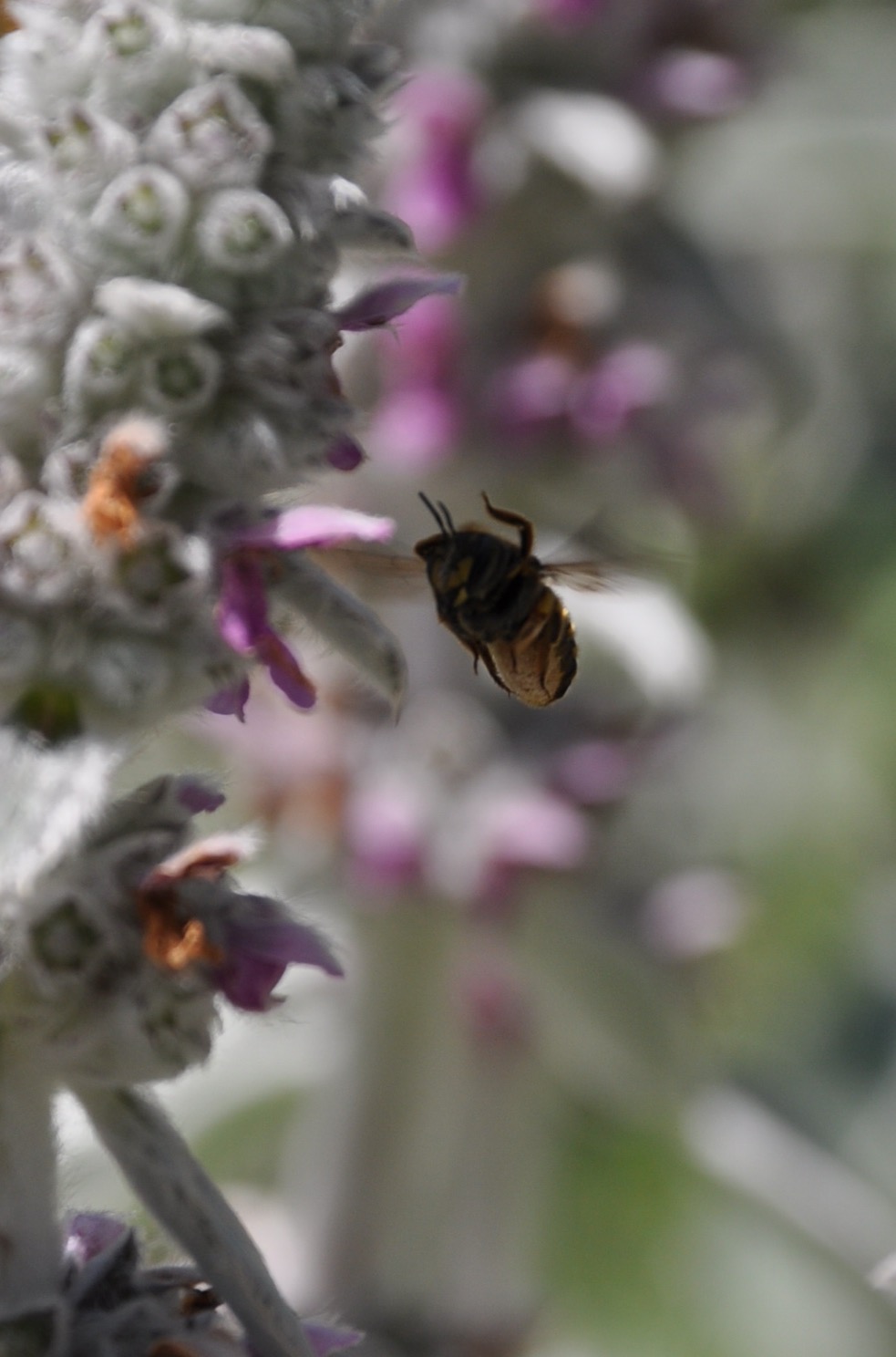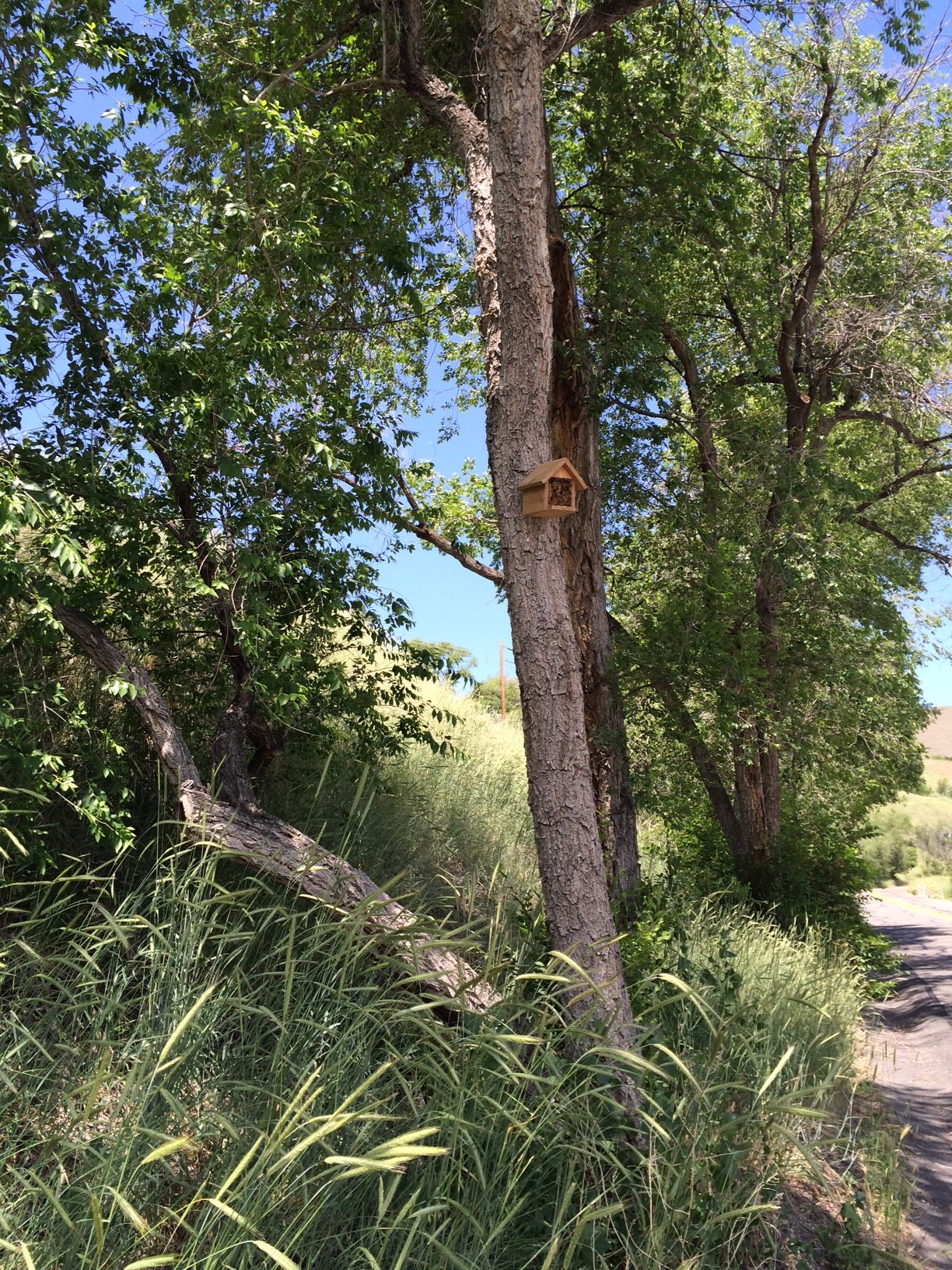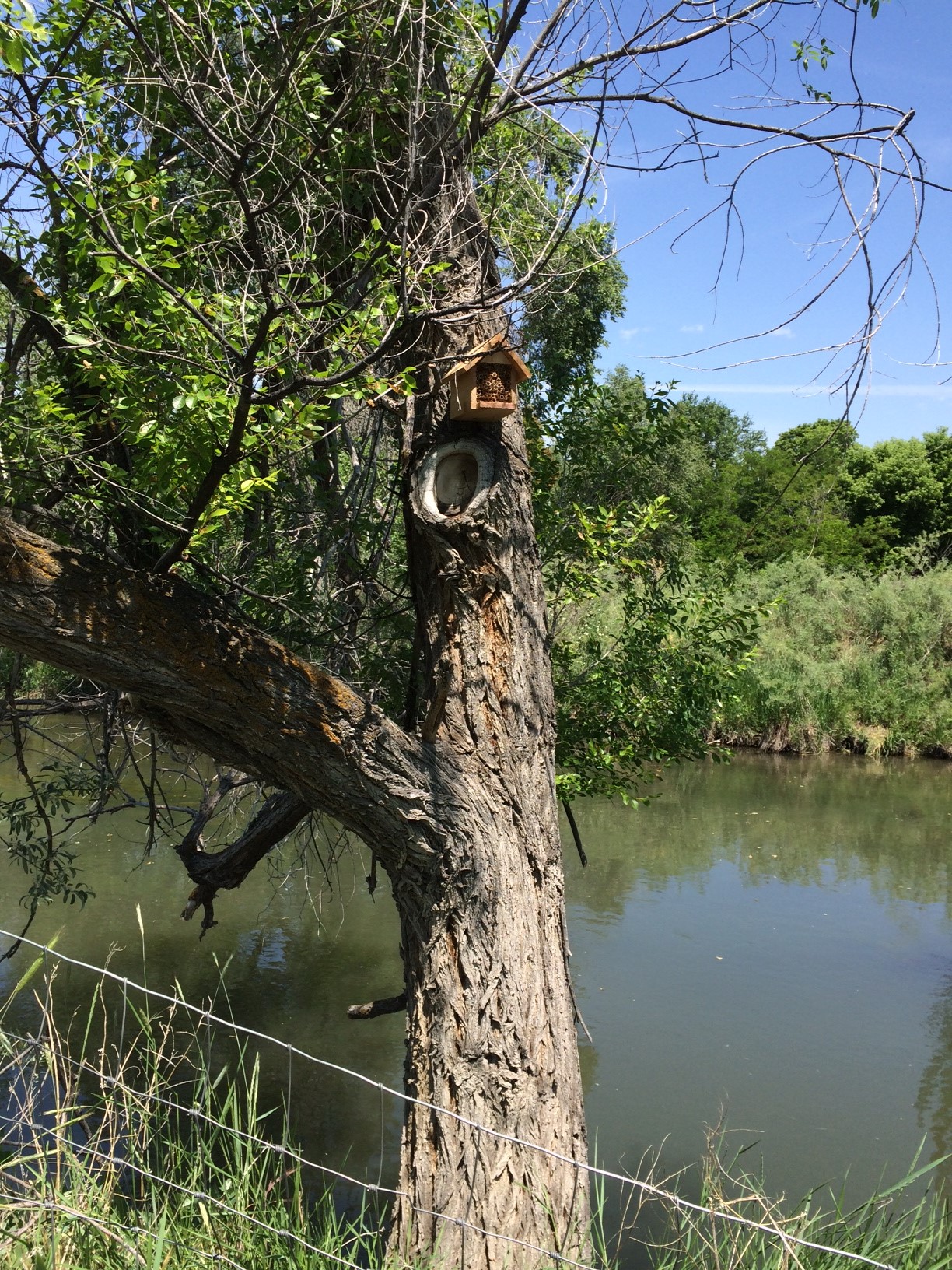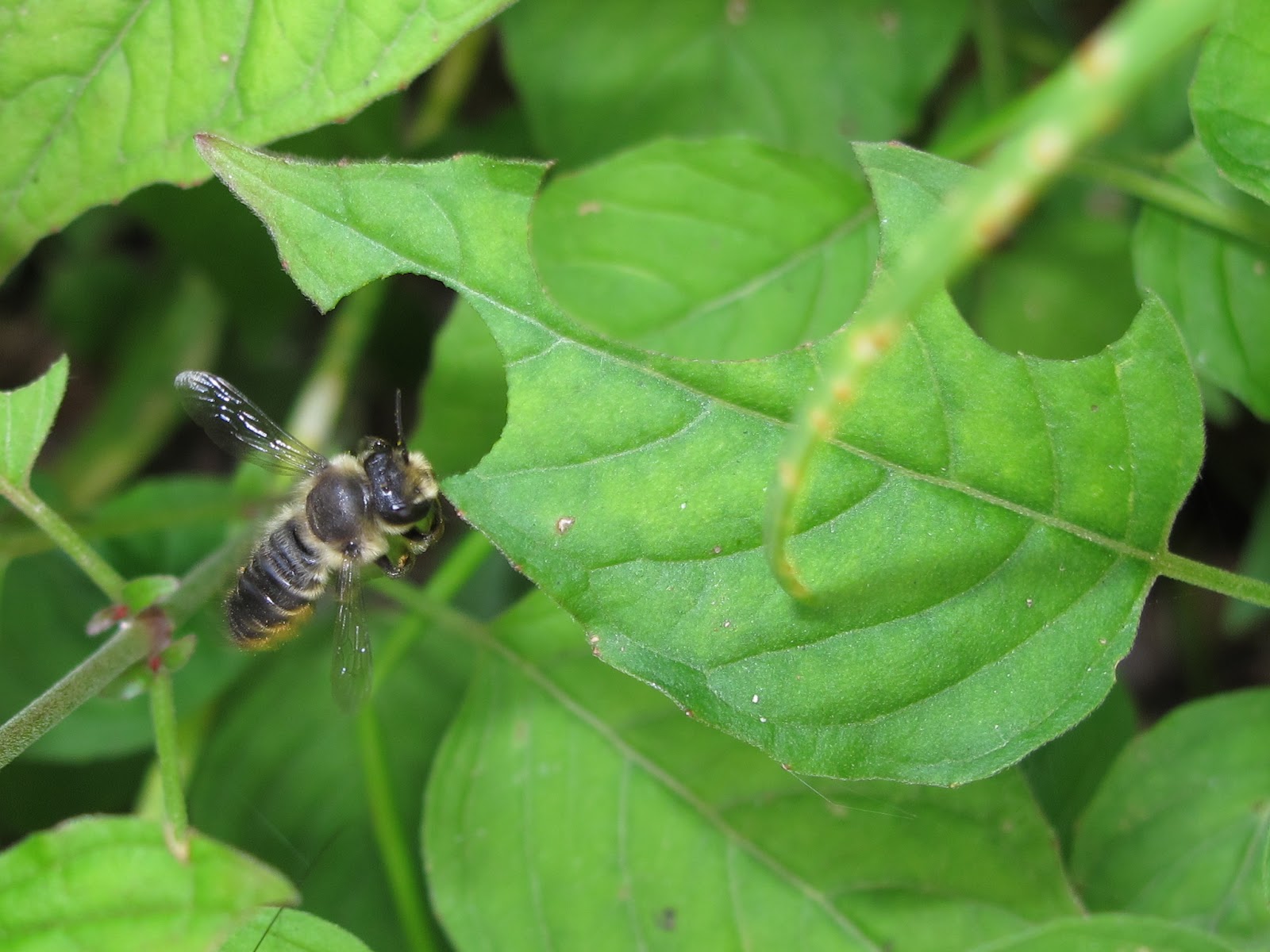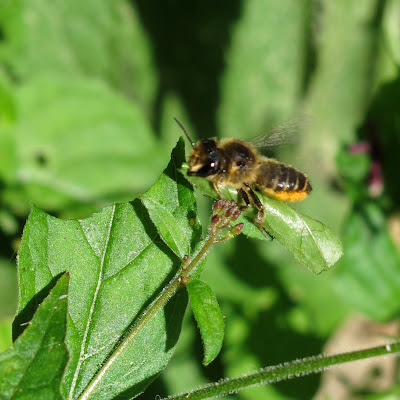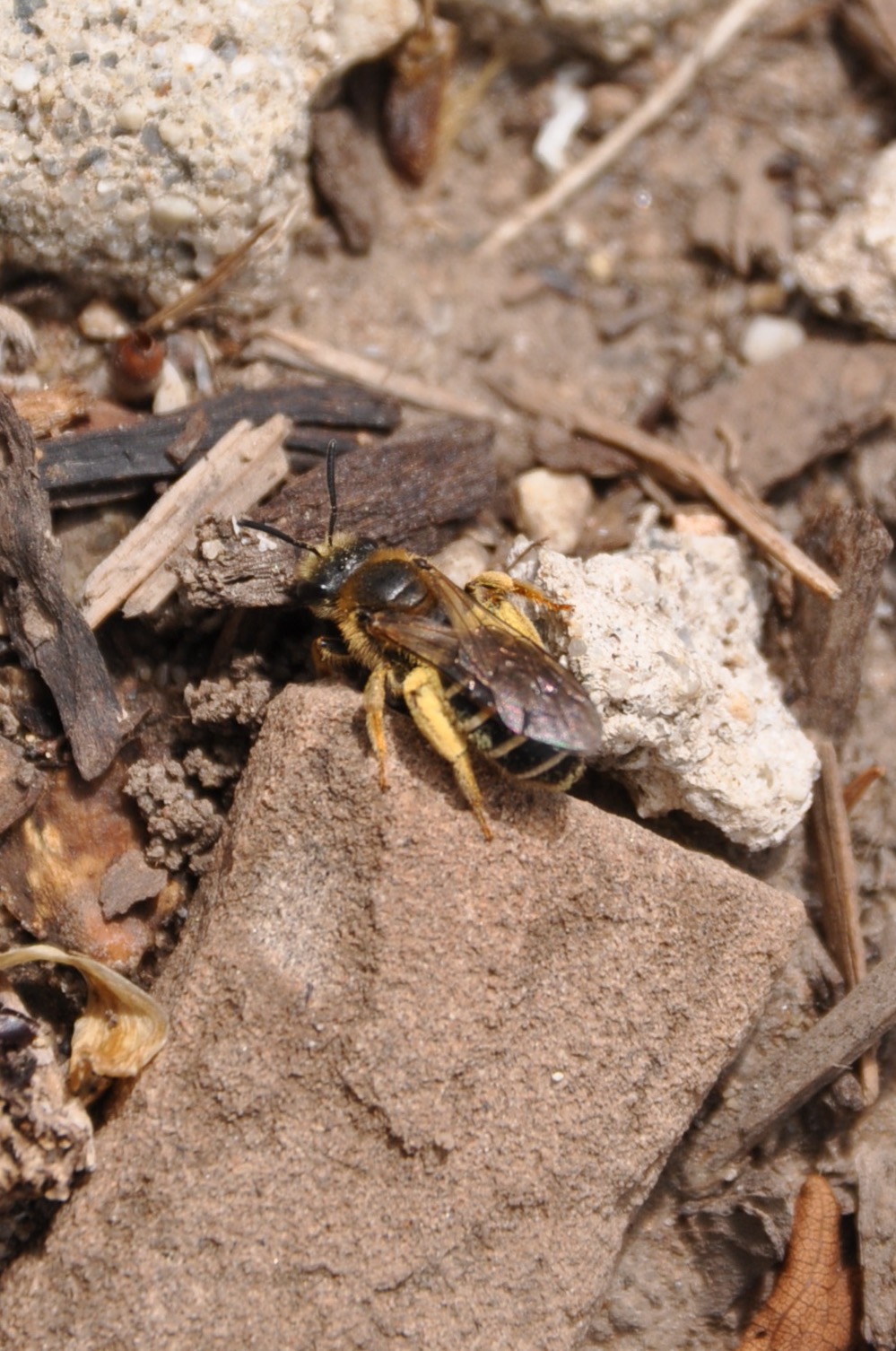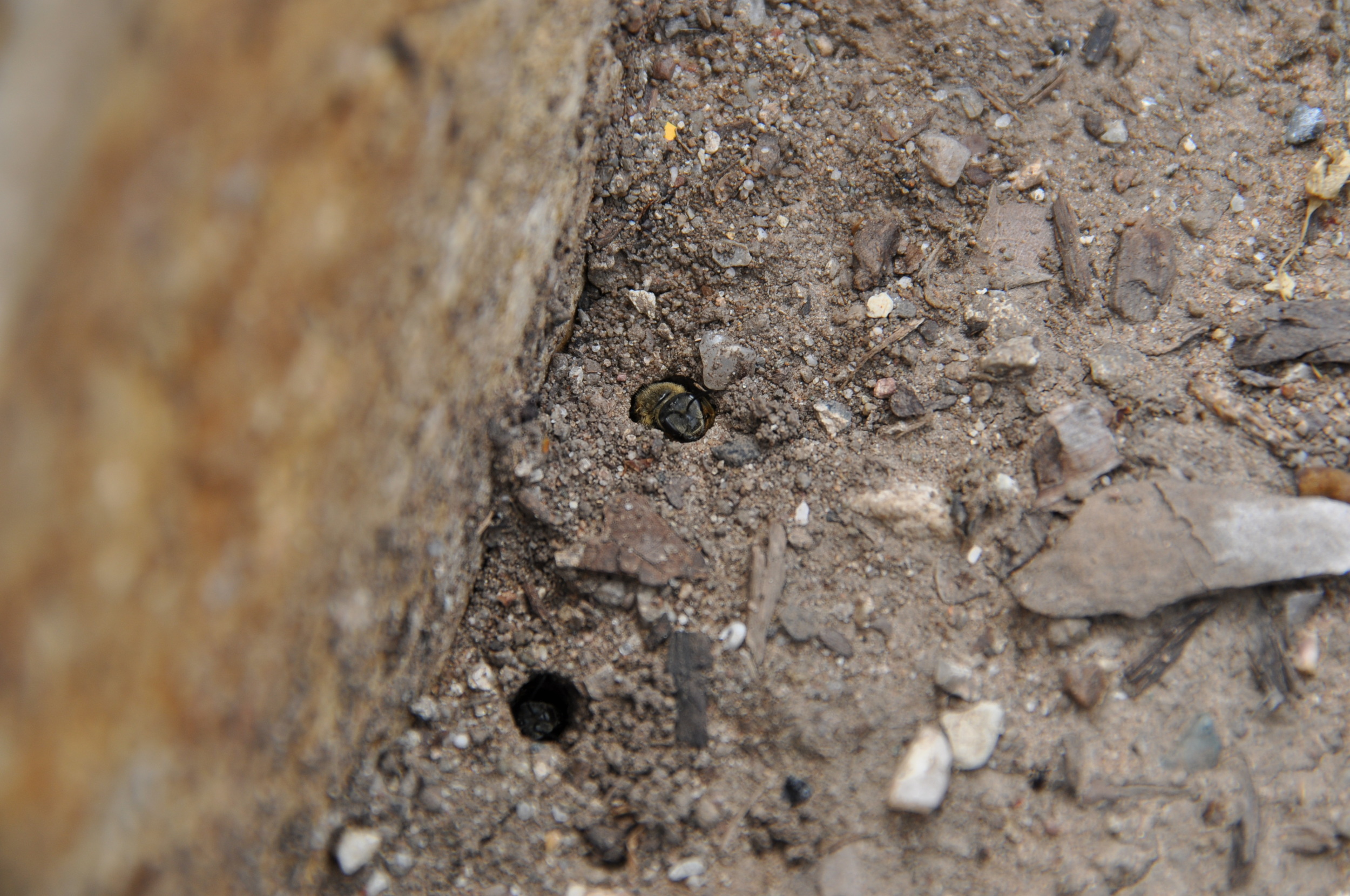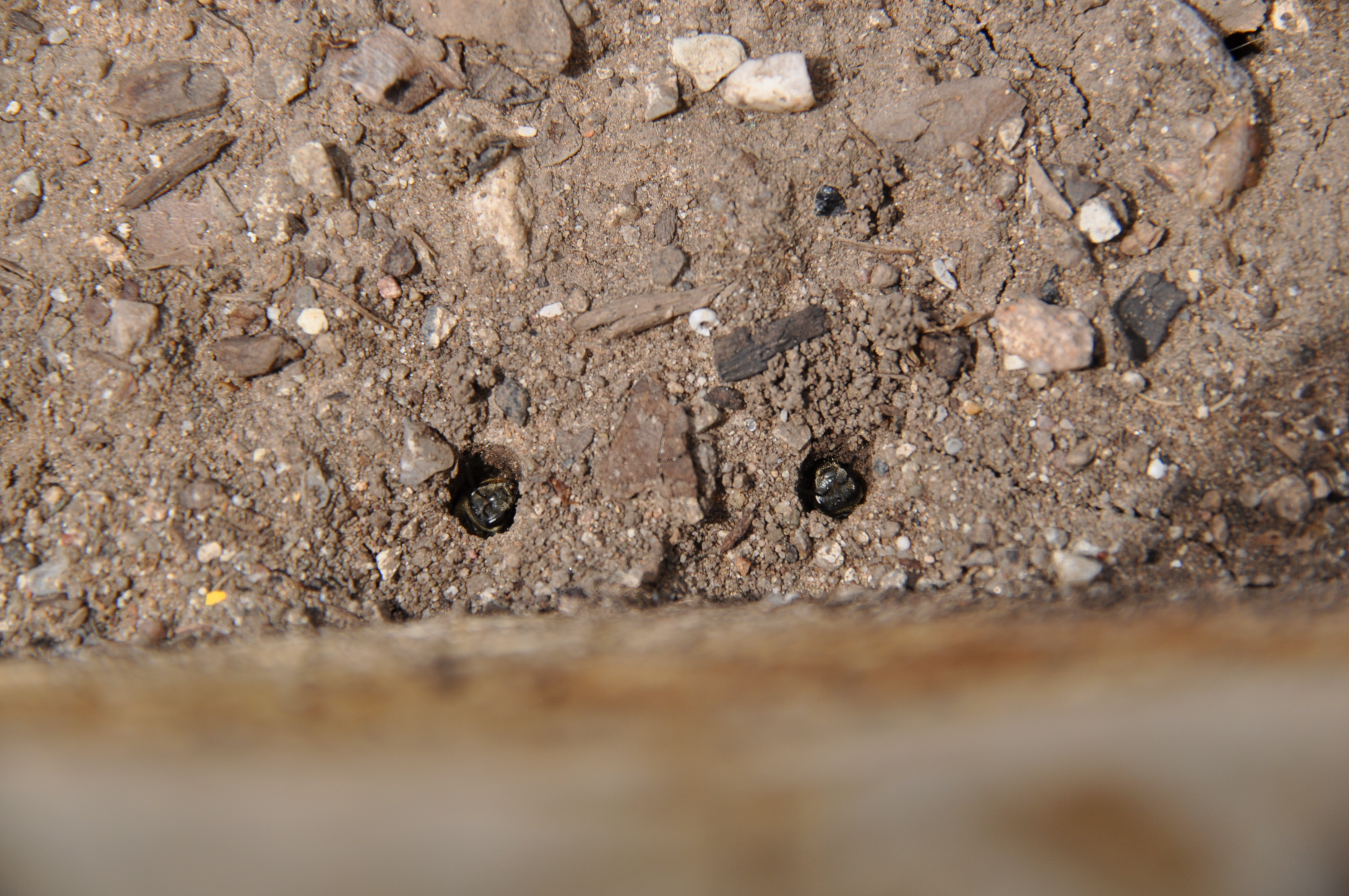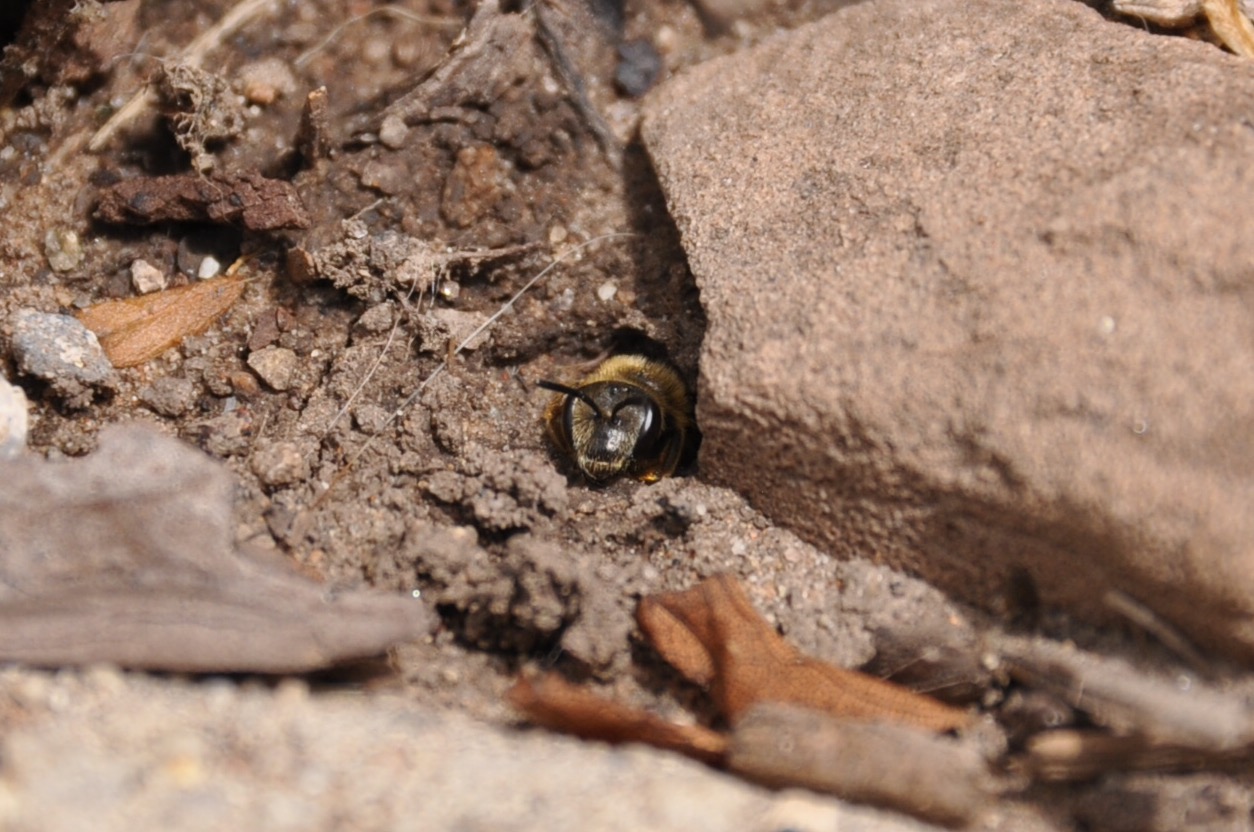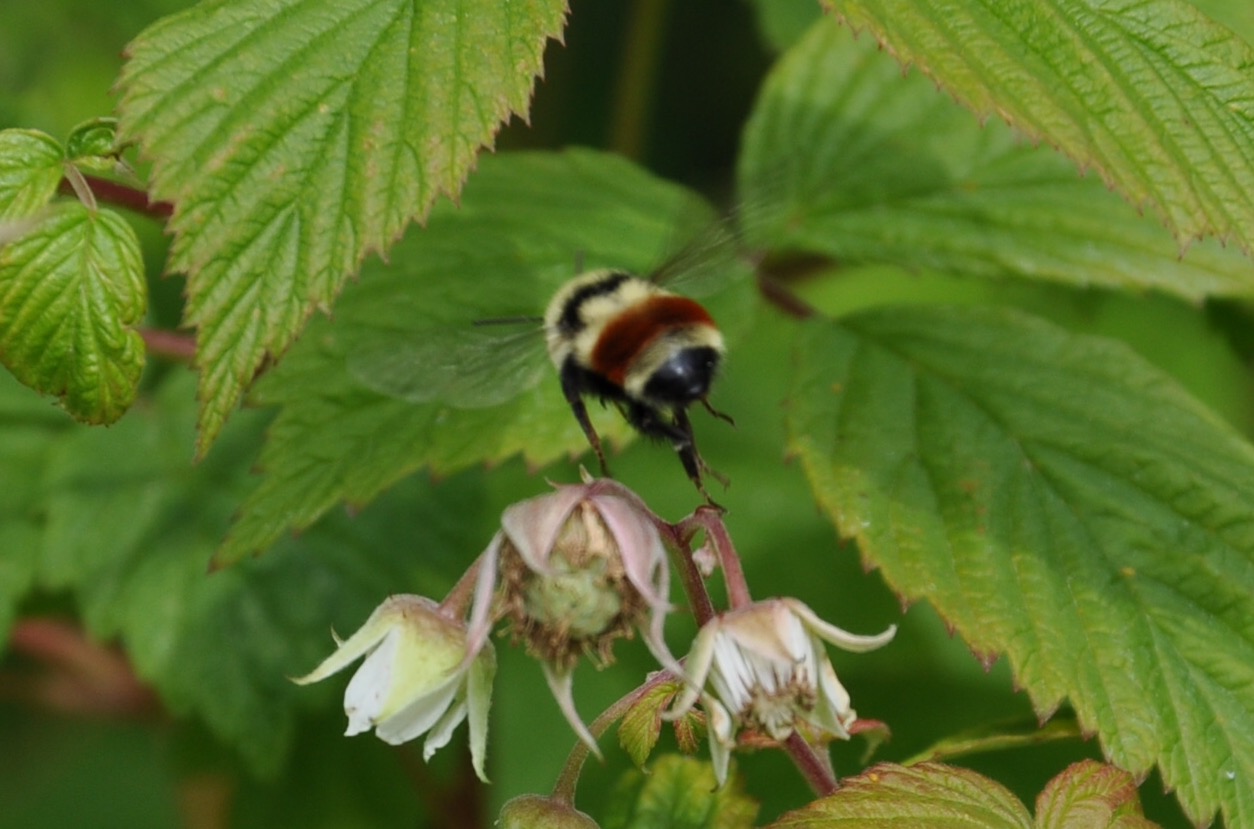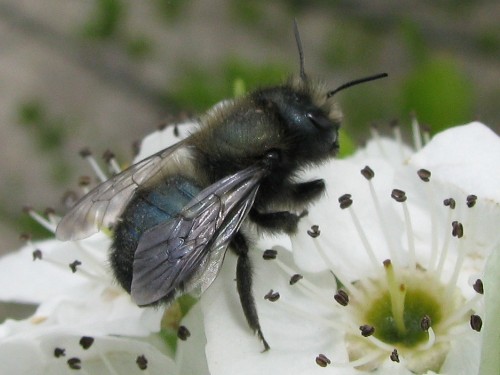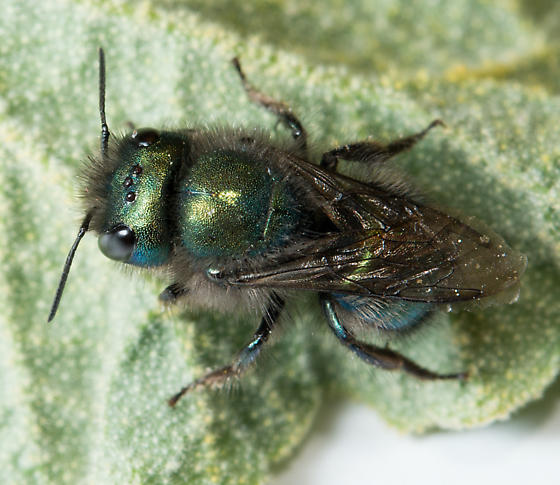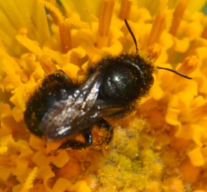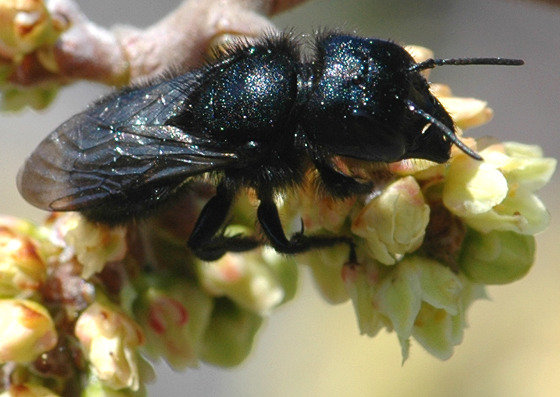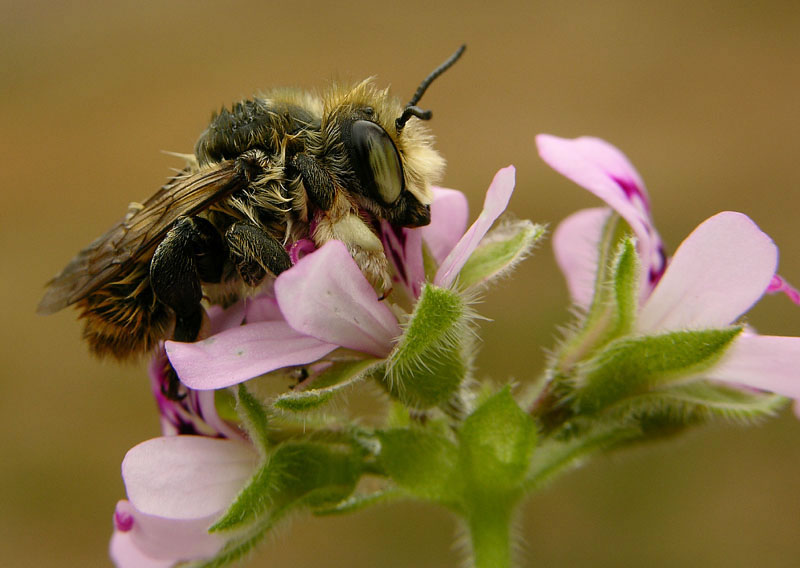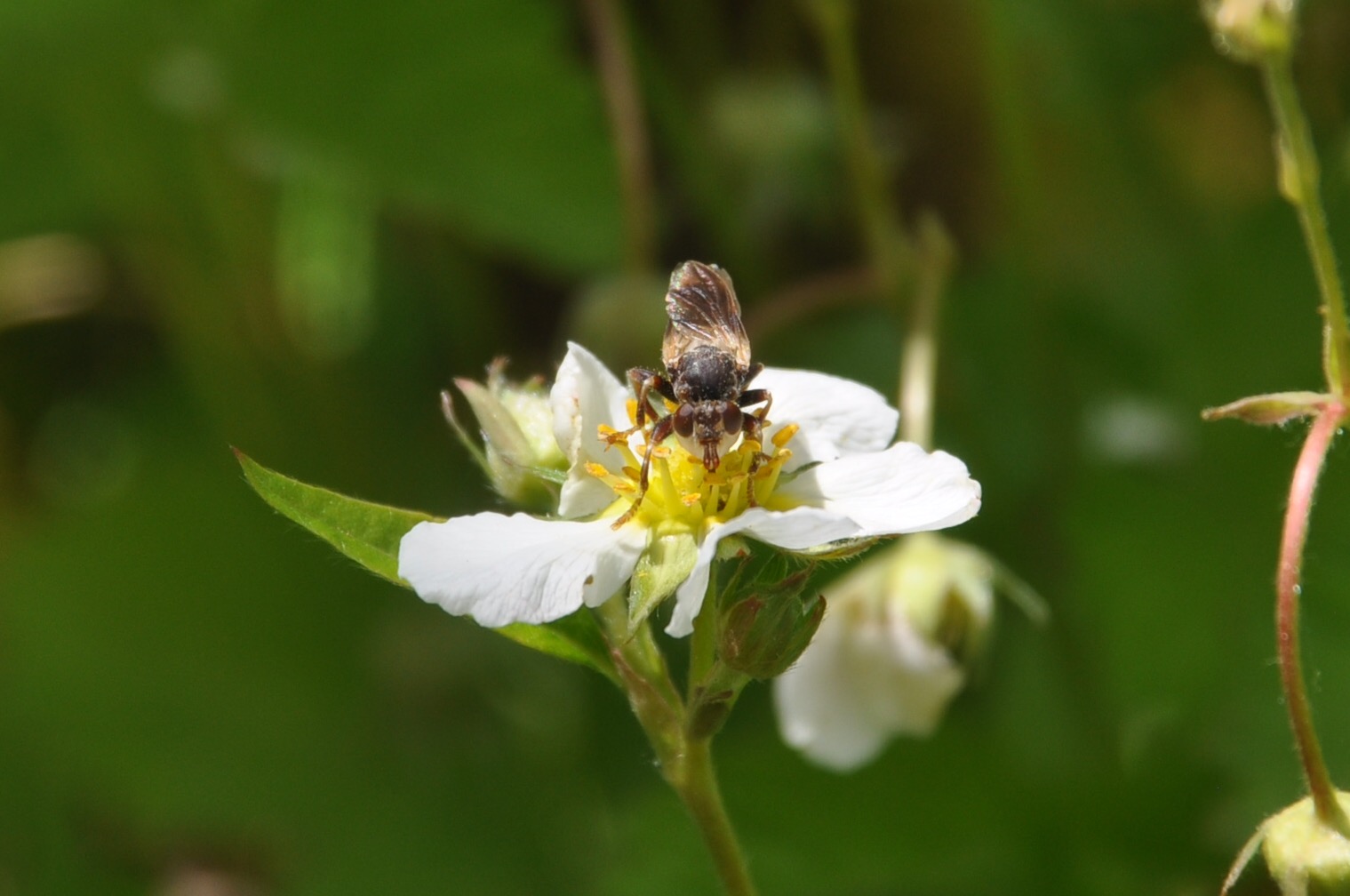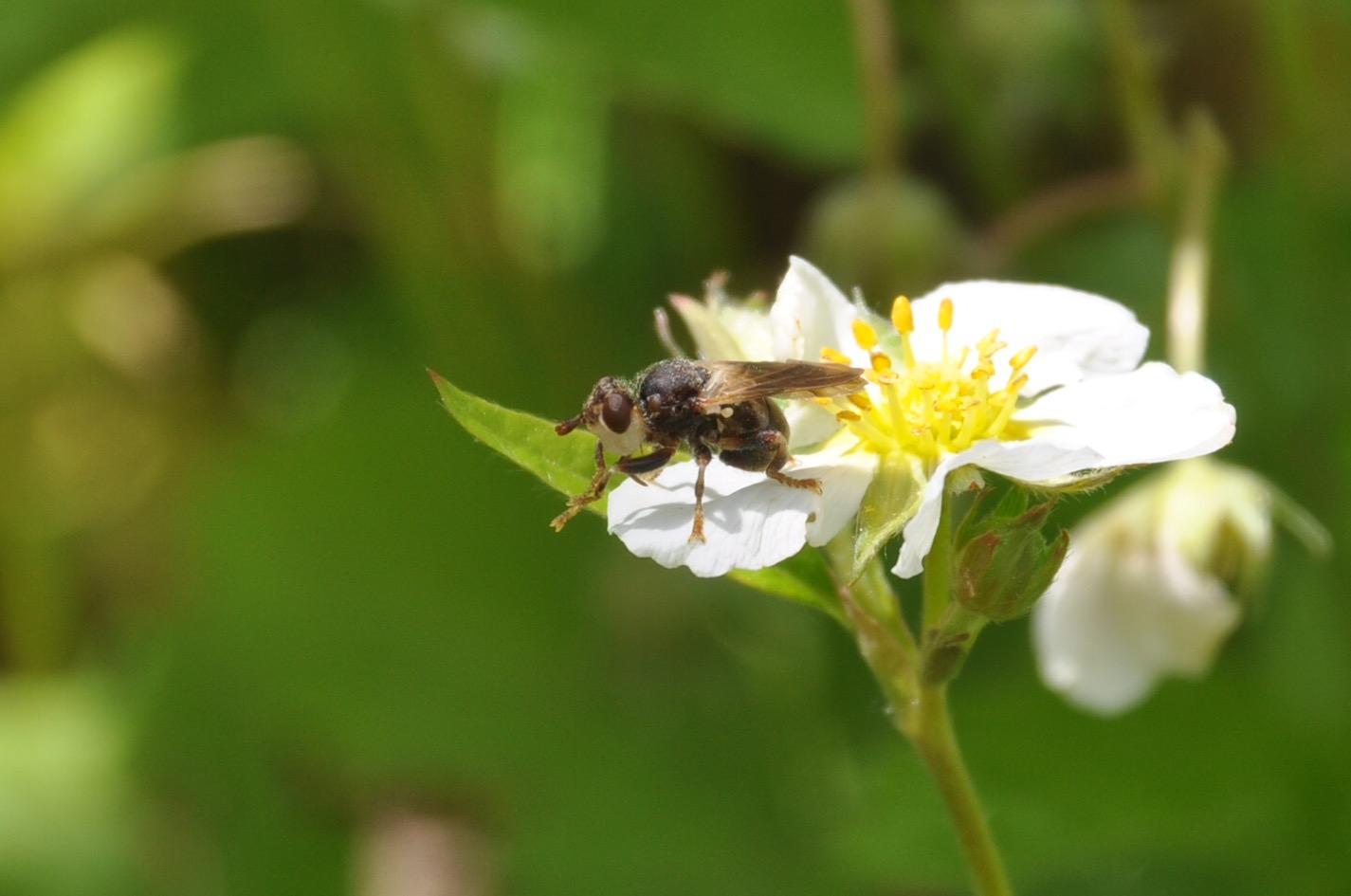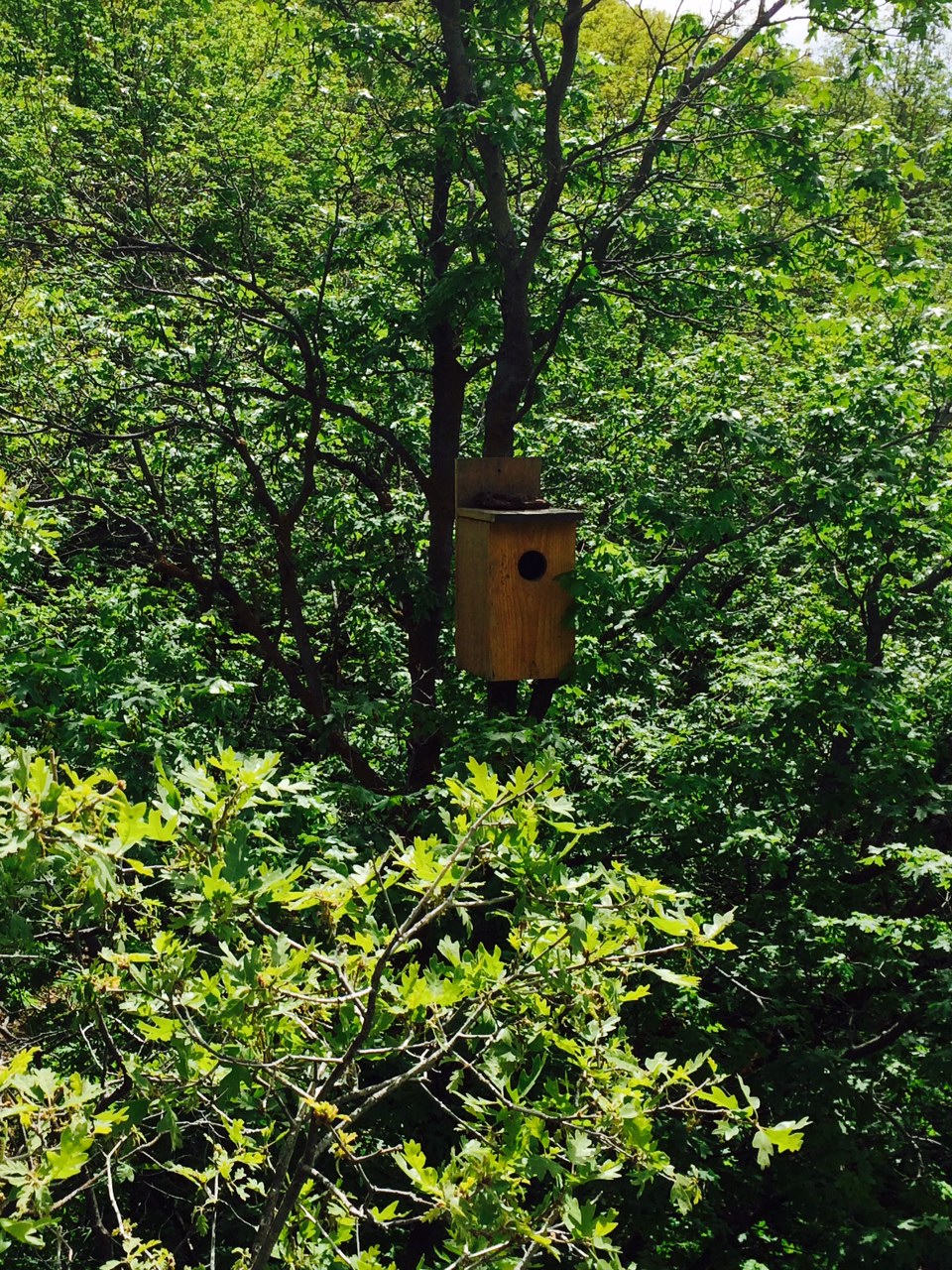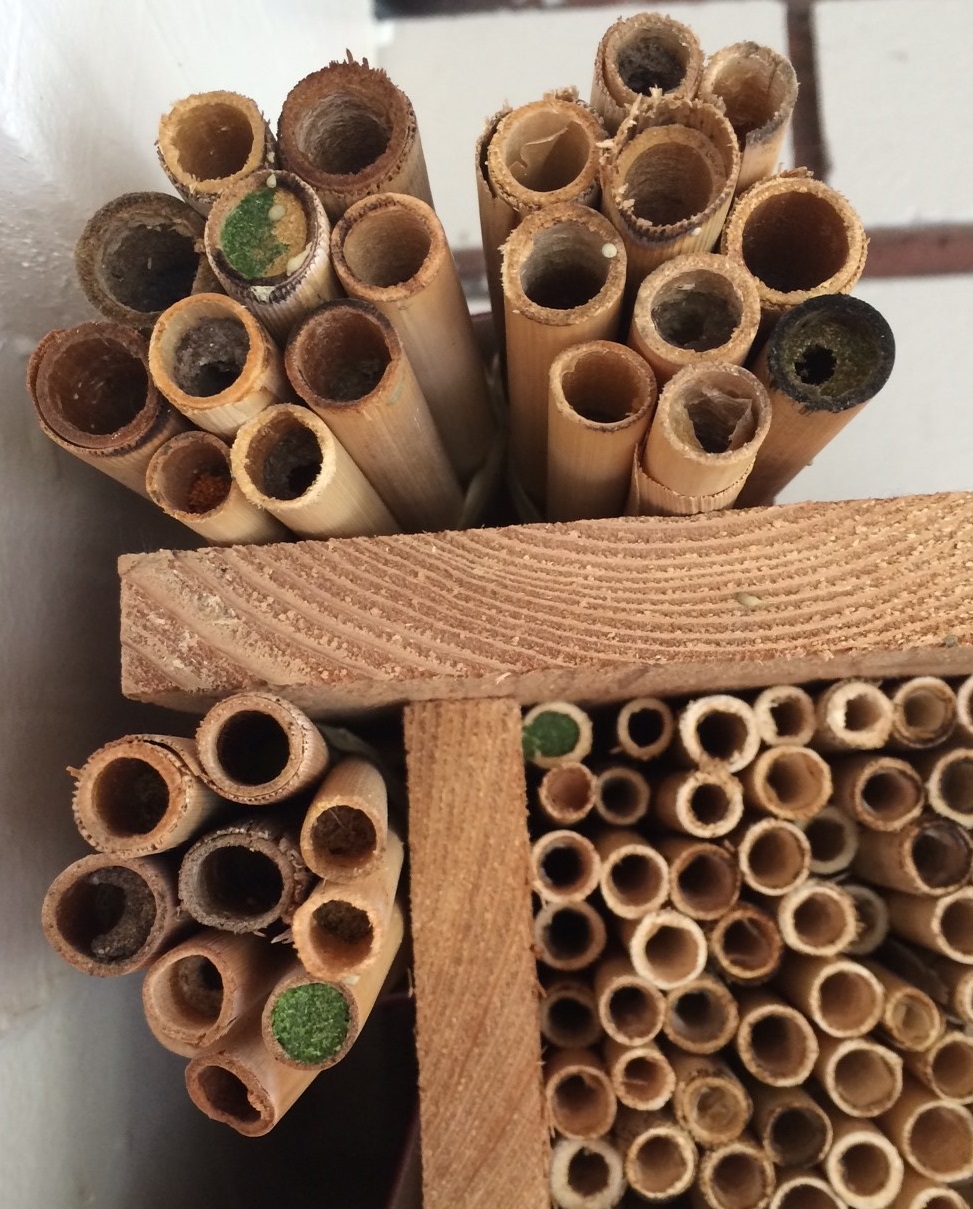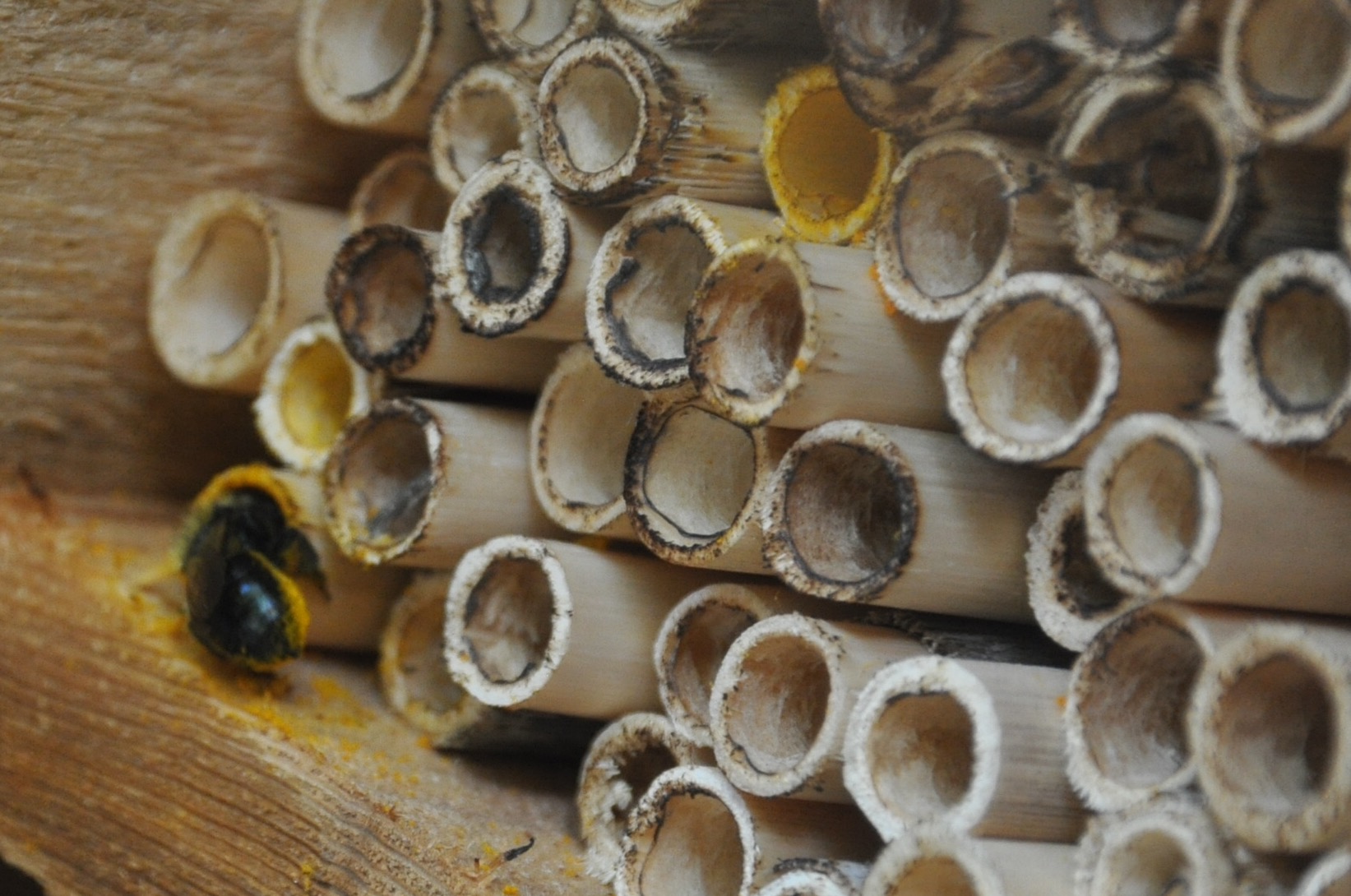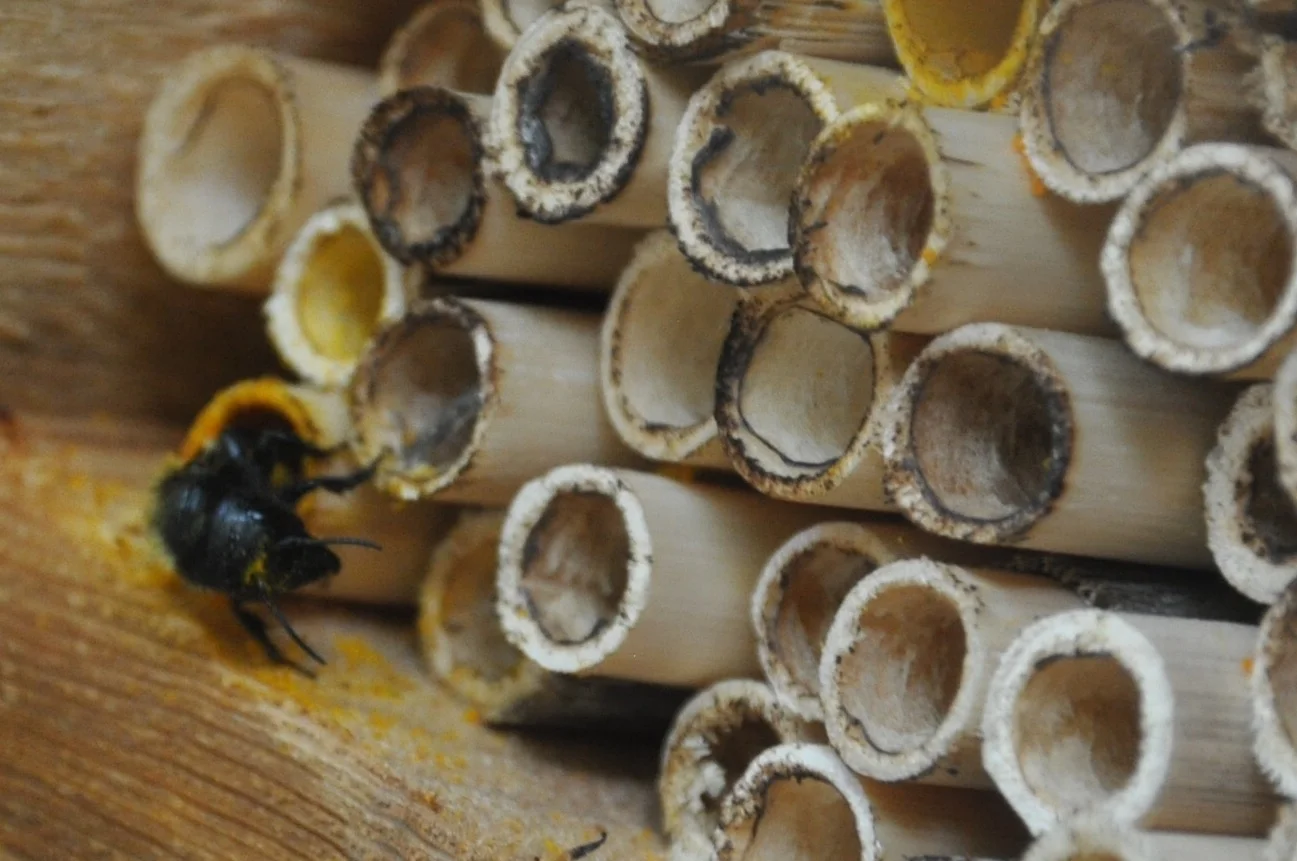The main reason to have a bee condo is to see cool stuff.
Don't condos provide a "home" for bees and other pollinators? Yes...technically. We can also "survey" for pollinators using the condos.
But let's face it. Bee condos are for humans. To see cool stuff.
The typical condo "dwellers" are solitary bees and wasps. You can watch them provisioning nests in the condo, as they fly away and return with food.
One of the most common condo dwellers is Osmia (mason bees):
Also leafcutter bees:
Sometimes you get "SQUATTERS" in the condo. These are insects living in the condo, but not really in the way it was intended (by us humans). Spiders, for instance.
This "squatter" was making a nest on the back wall of a condo where the reeds had fallen out:
And finally.. there are condo "LURKERS." These are parasites that lay in wait for bees or other condo dwellers to leave on a foraging trip, then sneak inside to lay their own eggs. Pretty smart!
A classic "lurker":





